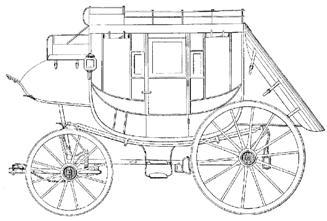There is some confusion on the exact location of Gilman's Station. Musetta Gilman tells the story of the site, run by her husband's ancestors, in Pump on the Prairie. Nonetheless, most sources generally agree on the identity of Gilman's Ranch as a relay station and a stage stop listed on the 1861 mail contract. (NPS)
The Gilman brothers had left the family homestead in Bartlett, New Hampshire, in 1854 and drifted west, stopping first in Iowa and then moving on to Nebraska. In the early summer of 1859, at the height of the Pike’s Peak gold rush, they were hauling merchandise to sell to the miners in the Rocky Mountains: drugs, goods, clothing, whiskey, ammunition, iron pipes, wheelbarrows, tools, and one luxury item—”a fine red, iron pump … A sign of affluence on the frontier where a windlass and bucket were the usual means of getting water from the well.”
About eighty miles west of Fort Kearny, nearly to the Colorado border, the Gilman brothers had the good fortune to break a wagon axle. They were about seventeen miles east of Cottonwood Springs, a well-established stop for travelers along the Oregon Trail (it would become the site of Fort McPherson). Unable to go forward to Colorado or retreat back to Nebraska City, John and Jeremiah Gilman settled where the wagon gave out. Within days they were trading their goods with nearby Sioux and Cheyenne Indians for buffalo robes. Emigrants headed west in wagon trains soon stopped, too. The Gilman brothers decided to grow where fate had planted them. The first sign of their permanence was that they dug a well, lined it with cedar posts, and installed the red iron pump, a landmark for travelers into the West that would become beloved in Nebraska folklore.
Christopher Corbett, Orphans Preferred, p. 107
Unable to find coordinates for Gilman's Station, the mapped location is Fort McPherson.
